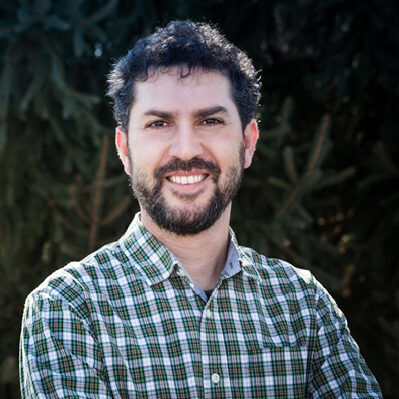
Meet Waterborne Living Legend: Nathan Snyder
 “I’ve been with Waterborne for almost 30 years, and in that timeframe, I’ve held 30 different jobs.”
“I’ve been with Waterborne for almost 30 years, and in that timeframe, I’ve held 30 different jobs.”
This is a simplified summary of a career that’s taken Nathan Synder, Principal, Exposure Modeling and Risk Assessment and this month’s Waterborne Legend, throughout the USA in pursuit of science and a cleaner environment. He began his long career in 1995, fresh from earning his Masters in Agriculture Engineering from Virginia Polytechnic Institute and State University. “My masters work was related to non-point source pollution and watershed studies that were looking at farming BMPs (Best Management Practices) focused on improving water quality within the Chesapeake Bay watershed. When it was time to look for my first job, I wanted to work with a company in that same field. One of my professor’s brothers worked at the EPA and knew Marty (Williams, Waterborne’s co-founder) and had heard that he’d set up his own firm in Leesburg, Virginia. I looked Waterborne up and blind-sent Marty my resume.”
“I was so young. At the time I was still single. Not for long—my first phone call with Marty happened right before my wedding. I officially interviewed after my wedding. Today, my daughter is in graduate school and my son is a Junior in college, and I’m still with Waterborne,” he says with a chuckle. “Over the years my clients have moved around to different companies or their companies have been purchased/spun off. They’ve brought Waterborne with them. I like that I’m a consistent presence in their careers. That they know Waterborne will always have them covered.”
Nathan’s early days found him mostly on the road setting up monitoring stations and other field studies projects. “Half my job was spent working with electronic data and instrumentations at weather stations, and the other half was geographical information systems GIS, running regulatory models collecting data and running simulations for chemicals in water.” Today, he sums up his work as providing expertise in environmental quality investigations including chemical fate and transport modeling, GIS and information processing, and field study design and instrumentation.
His early projects included the groundbreaking AEMP Midwest Watershed Study, that celebrated its 20th anniversary earlier this month. “The study originally had 40 locations and I installed 25 of them myself.” He adds, “field work has always been a tremendous source of interesting studies. A lot of scientific innovation has stemmed from solving problems in the field.” It also leads to MacGuyver-esque riggings. “I recall having to build floating structures that could take samples in the bayou, past the alligators, and modifying a fridge to house an off-grid refrigerated sampling system.”
Nathan’s own work is not the only thing that has changed through the years. “The industry and how we approach our work has changed over time. Today’s technology has greatly improved everything from study time to forecasting. For example, models that use to take all night to run for a single scenario will take mere seconds today. That has opened opportunities and allowed us to cast wider nets in our studies. We can be far more precise in our work and take what had been a complex question and drill down to the finer details with greater ease. With today’s technology, we can direct risk to precise mitigations. We can take a widely used pesticide, for example, and identify chemical risk and species protections at a very local scale.”
“Regulatory requirements have changed alongside technology. Today, the EPA understands that chemical labels may not apply to every situation. In agricultural terms, this may translate as every acre in a field may not be impacted by a chemical’s use. Our work can show them the exact path and any potential risk to such a finite degree that we end up saving our clients money and time in the process.”
“The scientific advancements and study improvements are what I love most about our work. Waterborne has always been a great incubator for new scientists working within our industry. These new graduates share the latest technologies from their own university studies and bring to our team fresh academic knowledge. When I began working with Waterborne, I only knew FORTAN programming. Today, we’re working with Machine Learning. It’s amazing.”
These last thirty years have been time well spent, for Nathan. “I take great pride in having worked with so many clients on groundbreaking studies over the years. From my early days in the field to my more managerial and strategic role today, each stage has taught me something while helping keep science fresh and exciting. I’m particularly proud that my work has supported clients’ products from their earliest field study stages and, as the products matured, continued to the re-registration or refined risk assessment stage. I’ve been with them through the years.”
While Nathan’s daily tasks may have changed with time, one thing has been a constant: his love for the science. It’s remained his focus in an industry and world that’s ever-evolving, with him adapting to meet next big challenge.

Waterborne Environmental, Inc. Hired to Create Online Dashboard That Tracks Nutrient Loss Across the State of Missouri
READ MORE

Swimming with Bacteria: Water Quality Concerns at the 2024 Paris Olympics
READ MORE

The Right Tool – Multidimensional Models
READ MORE



